Please filter by different types of publications
All Scientific Publications
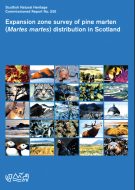
This report arises from a partnership project involving The Vincent Wildlife Trust and Scottish Natural Heritage. The aim of this field-based survey was to gather new information on the changing distribution of the pine marten in 2012.Given the anecdotal evidence of the species’ continuing re-colonisation of Scotland following its historical decline, this survey concentrated upon an ‘Expansion Zone’ beyond the pine marten’s known range revealed by surveys in the 1980s (Velander 1983) and 1990s (Balharry et al. 1996).
Download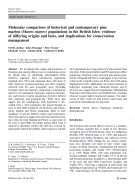
We investigated the origins and persistence of European pine marten populations across the British Isles by identifying mitochondrial DNA (mtDNA) sequences from contemporary populations (sampled since 1981) and comparing these with those of older ‘historical’ museum specimens (pre-1981) originally collected from the same geographic areas.
Download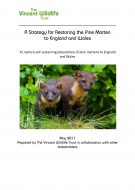
Although sightings reports and occasional genetic evidence confirm the presence of the pine marten in parts of England and Wales, limited success in their detection despite concerted efforts suggest that they are not abundant and that populations have failed to recover from their historical decline.
Download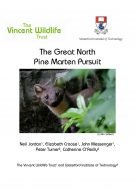
The ‘Great North Pine Marten Pursuit’ surveys were initiated in order to collect pine marten DNA from extant populations of England. They aimed to determine the presence of pine martens in specific areas, and so allow a focussing of future conservation resources in those areas, whilst also determining the genetic haplotype of the pine martens.
Download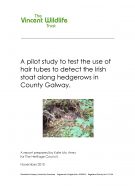
In Ireland the Irish stoat is considered to be a near-endemic subspecies, with >90% of the global population estimated to occur in the country. This study involved laying plastic baited hair tubes, 10 per 200 metres at 20m intervals, along hedgerows in the bottom left 1km2 of 10km grid squares across County Galway.
Download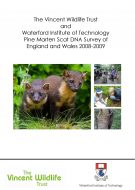
In 1995 The Vincent Wildlife Trust (VWT) revived its interest in pine martens and explored a number of different methods of detecting the presence of martens, including scat surveys. During this period the Trust’s experiences led to a growing scepticism about the reliability of the field identification of scats on the basis of physical attributes.
Download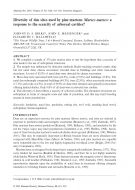
Dens are an important resource for pine martens and sites are selected in response to predation risks and energetic constraints. We compiled a sample of 370 pine marten dens to test the hypothesis that a scarcity of sites leads to the use of suboptimal structures.
Download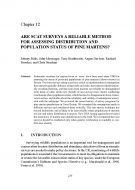
Systematic searches for marten feces or ‘scats’ have been used since 1980 for assessing the status of protected populations of pine martens in Britain. This report reviews the recent history of survey programs for pine marten populations in Britain and examines the accuracy of marten scat identification in the field.
Download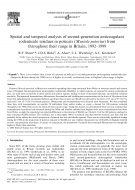
Polecats in Britain are currently expanding their range eastwards from Wales to reoccupy central and eastern areas of England. Second-generation anticoagulant rodenticides (SGARs), to which polecats are exposed by eating contaminated prey, are used more extensively in these central and eastern regions, leading to fears of increased exposure, and possible resultant mortality.
Download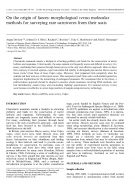
Charismatic mammals remain a linchpin in attracting publicity and funds for the conservation of native habitats and organisms. Unfortunately, the same animals are frequently scarce and difficult to survey. For many, confirming their presence through faecal surveys is the only cost-effective approach.
Download